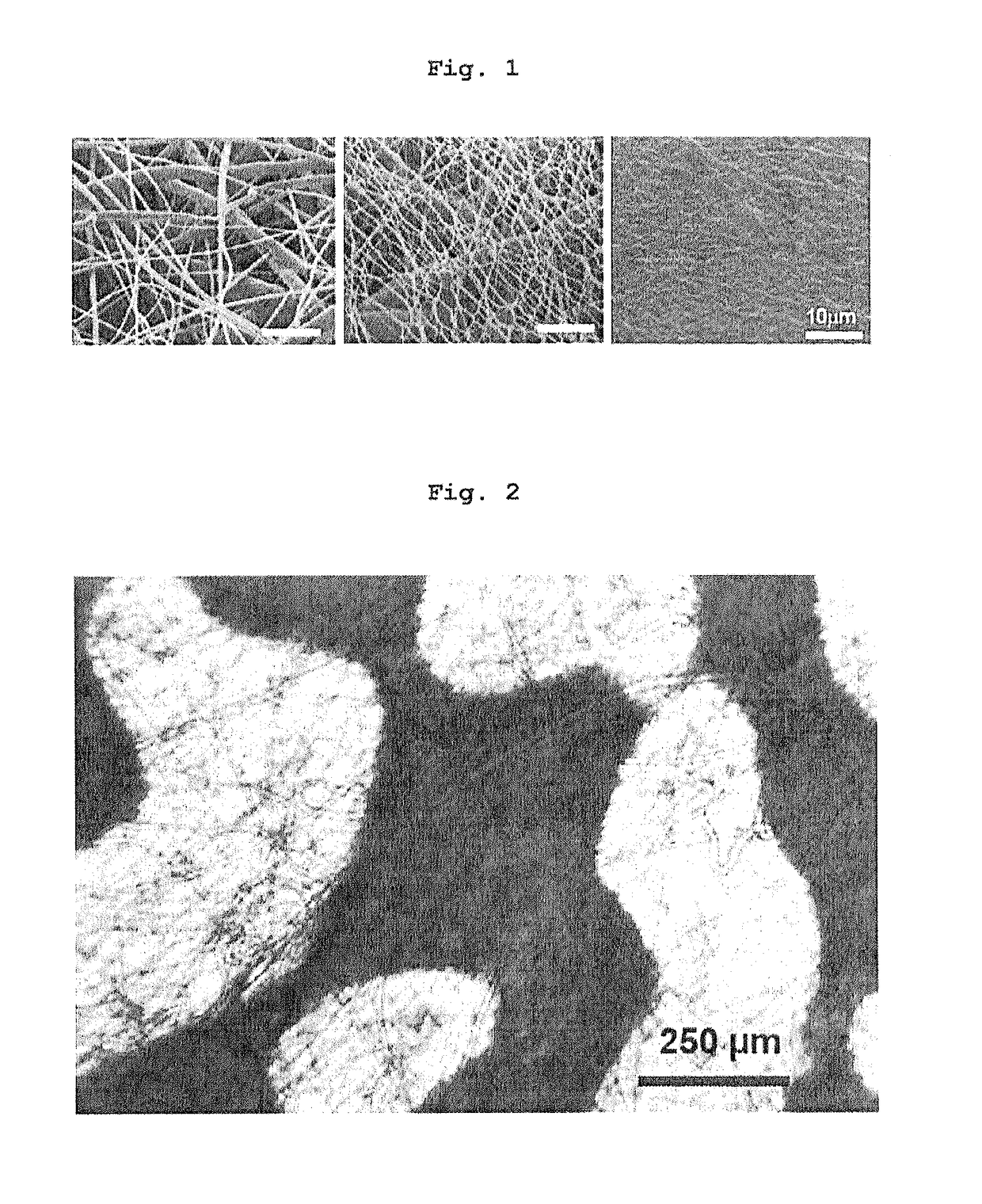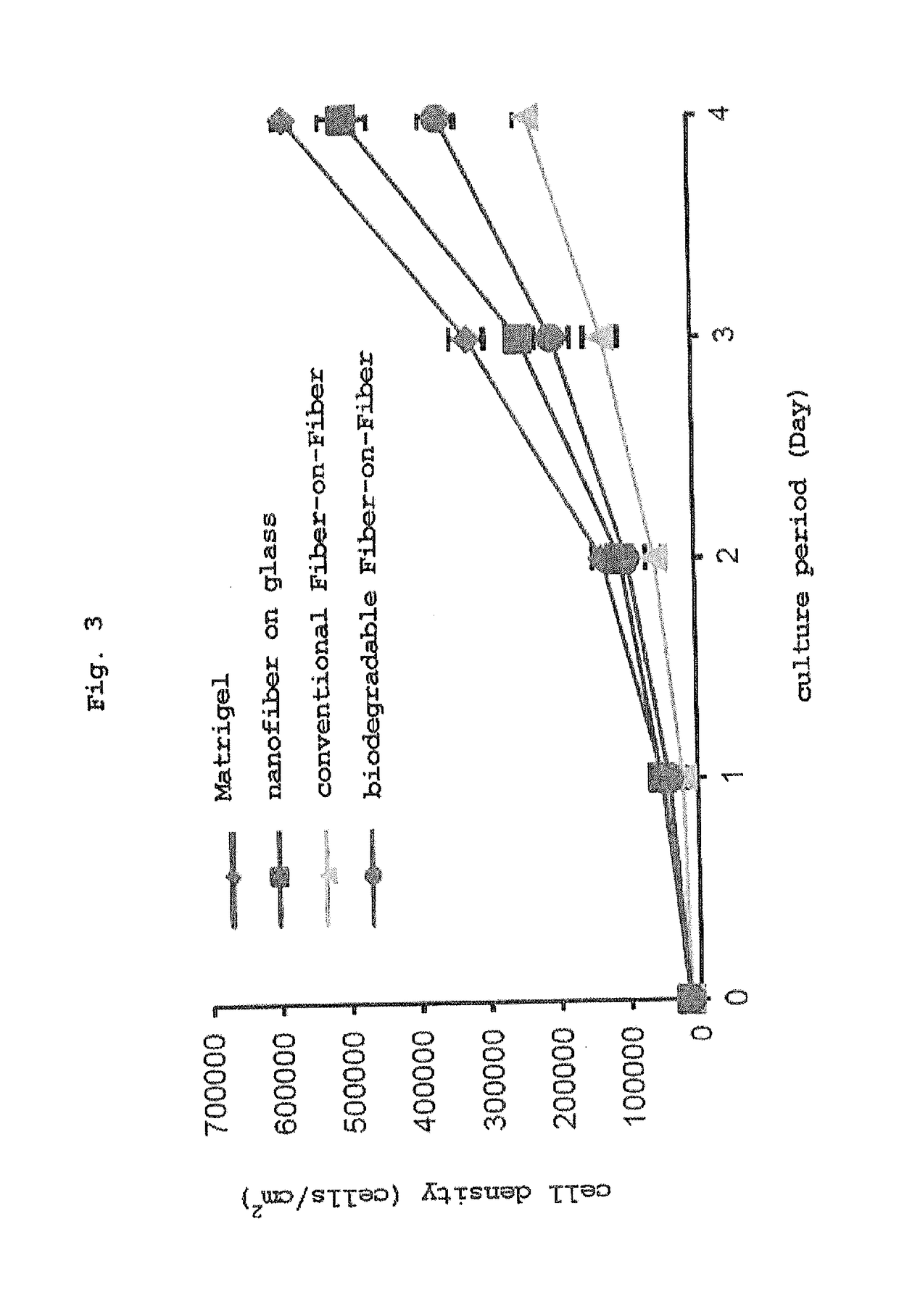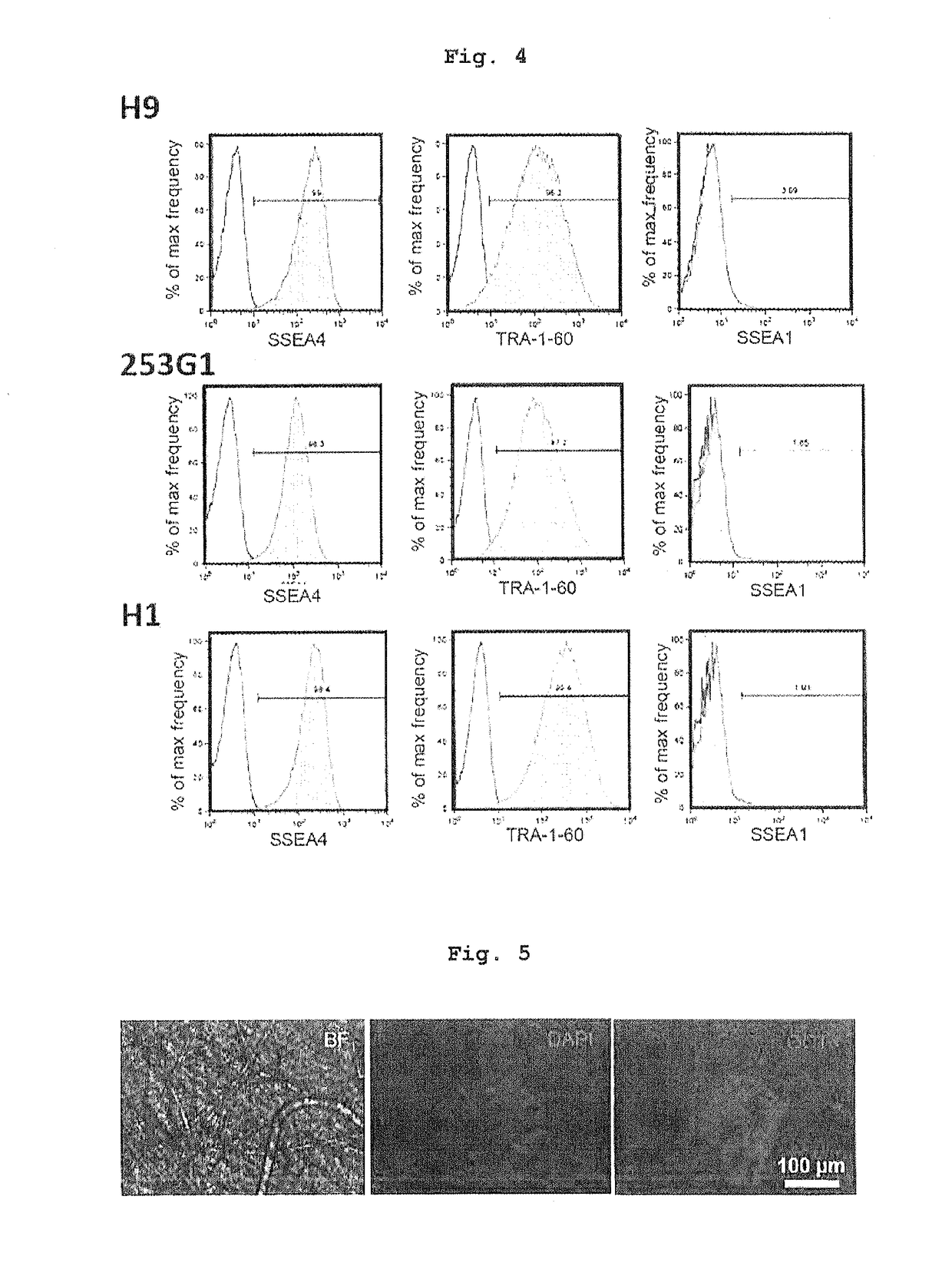Three-dimensional culture method using biodegradable polymer and culture substrate enabling cell transplantation
a biodegradable polymer and culture substrate technology, applied in the field of three-dimensional culture of cells, can solve the problems of inability to develop a high-quality, fully automatic, human-pleural stem cell culture method, and inability to achieve stable culture and supply of human pluripotent stem cells, etc., to achieve high biocompatibility, high physical strength, flexible shape
- Summary
- Abstract
- Description
- Claims
- Application Information
AI Technical Summary
Benefits of technology
Problems solved by technology
Method used
Image
Examples
example 1
(1) Materials
Gelatin Solution
[0134]gelatin (SIGMA G2625 MW: 30 kDa)[0135]glacial acetic acid (AA; SIGMA P-338826)[0136]anhydrous ethyl acetate (EA; SIGMA P270989)
Crosslinking Buffer
[0137]water-soluble carbodiimide (WSC; DOJINDO Catalog 344-03633)[0138]N-hydroxysuccinimide (NHS; SIGMA Catalog 56480)[0139]0.99.5% ethanol (Wako)[0140]gauze BEMCOT (registered trade mark) S-2 (Asahi Kasei Corporation)[0141]culture cover glass 25 mmφ and 32 mmφ[0142]silicon wafer[0143]vacuum pump[0144]NIPRO blunt needle 23Gx1¼″ non-bevel[0145]high voltage power supply (TECHDEMPAZ Japan)
(2) Operation Process
Preparation of 10% w / v Gelatin Solution (AA:EA=3:2) 1 mL
[0146]Gelatin (0.1 g) (final concentration 10% w / v), and sterilized distilled water (0.2 mL) were placed in a 2 mL tube. Then, glacial acetic acid (0.42 mL) (final concentration 42% w / v), and anhydrous ethyl acetate (0.31 mL) (final concentration 28% w / v) were added in a draft chamber, and the tube was vortexed and stirr...
example 2
Passage Method of Human Pluripotent Stem Cells on Fiber-On-Fiber
(1) Materials
[0152]mTeSR1 STEM cell VERITAS Corporation ST-05850[0153]Y-27632 Wako 257-00511 (1 mg) 253-00513 (5 mg)[0154]Cell Dissociation Buffer enzyme-free, Hanks′-based GIBCO 13150-016[0155]TrypLE Express GIBCO 12605-010[0156]human embryonic stem cells: H9, H1[0157]human induced pluripotent stem cell: 253G1
(2) Operation Process
Pre-Treatment of Nanofiber
[0158]Various nanofibers prepared in Example 1 were set on 35 mm dish (6-well plate), washed 3 times with 99.5% ethanol (1 mL), 3 times for sterilization treatment. In the third time, ethanol was carefully aspirated, and dried in clean bench. Various nanofibers were immersed in a medium, and incubated at 37° C. mTeSR1 (2 mL) was placed in a 35 mm dish.
Transfer of Human Pluripotent Stem Cells from MEF Feeder onto Nanofiber
[0159]To human pluripotent stem cell colony (60 mm dish) on MEF feeder was added enzyme dissociation solution TrypLE Express (2 mL), and the mixture ...
example 3
Transplantation of Human Pluripotent Stem Cells Cultured on Fiber-On-Fiber to Mouse
(1) Materials
[0166]isoflurane: ABBOTT JAPAN CO., LTD.[0167]immunodeficient mouse: CLEA Japan, Inc.[0168]Natsume atraumatic needle (sterilized): Natsume Seisakusho Co., Ltd.
(2) Operation Process
[0169]A fiber-on-fiber having PGA non-woven fabric as a support carrying cultured human pluripotent stem cells obtained in Example 2 was cut into 2×2.5 cm square.
[0170]Immunodeficient mouse (SCID C.B-17 / icr-scid / scid Jcl mouse, 8-week-old, female) was placed under systemic anesthesia by inhalation anesthesia with isoflurane. When the mouse was completely at rest, the skin of dorsal flank was incised by about 1 cm. Using tweezers, the above-mentioned fiber-on-fiber was folded about 3 times, inserted into the incised position, and the transplantation site was sutured using a Natsume atraumatic needle. When the teratoma grew to 2 cm in size (1-2 months later), it was removed from the mouse, immobilized by a convent...
PUM
| Property | Measurement | Unit |
|---|---|---|
| pore diameter | aaaaa | aaaaa |
| pore diameter | aaaaa | aaaaa |
| thickness | aaaaa | aaaaa |
Abstract
Description
Claims
Application Information
 Login to View More
Login to View More - R&D
- Intellectual Property
- Life Sciences
- Materials
- Tech Scout
- Unparalleled Data Quality
- Higher Quality Content
- 60% Fewer Hallucinations
Browse by: Latest US Patents, China's latest patents, Technical Efficacy Thesaurus, Application Domain, Technology Topic, Popular Technical Reports.
© 2025 PatSnap. All rights reserved.Legal|Privacy policy|Modern Slavery Act Transparency Statement|Sitemap|About US| Contact US: help@patsnap.com



